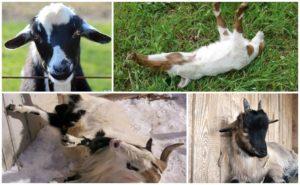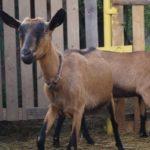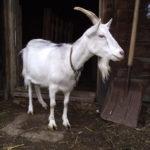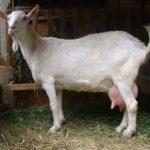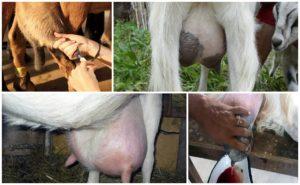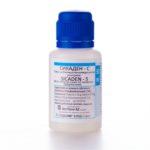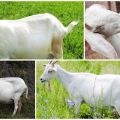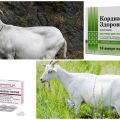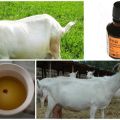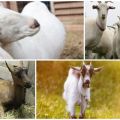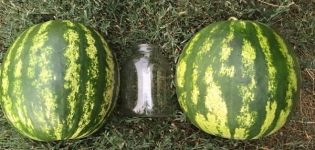The goat does not eat or drink, and the stomach is soft and there is no gum, what to do at home
Sometimes farmers are faced with a situation where the goat does not eat or drink, it has no gum, and the belly is soft. Such a clinical picture can accompany various diseases. These include childbirth paresis, mastitis, endometritis and other pathologies. To cope with unpleasant symptoms, the goat must be properly diagnosed. In some cases, it is impossible to do without the help of a veterinarian.
Content
The difference between a sick goat and a healthy one
A sick goat can be lethargic and inactive. Often these symptoms occur after lambing. However, they may not be associated with the birth of cubs. Other manifestations of pathologies include the following:
- increased breathing;
- dyspnea;
- increased heart rate;
- temperature increase;
- cold ears and limbs;
- loss of appetite;
- cessation of milk production.
The main causes of the problem
There are many pathologies that cause unpleasant symptoms. To cope with them, you need to make an accurate diagnosis.
Milk fever
If a high-yielding goat gives birth for the third time, she may develop milk fever. This condition is accompanied by paralysis, loss of appetite, and a decrease in temperature. The cause of the disease is a lack of calcium in the blood. This element is essential for full milk production. Pathology is caused by violation of the rules for feeding goats at the end of pregnancy.
To avoid problems, bean hay should be excluded from the diet of a pregnant goat. When using concentrates for feeding, you should limit yourself to bran, which contains a lot of phosphorus. As a consequence, there is a slight lack of calcium in the blood, which the body can cover by supplying it from the bones.
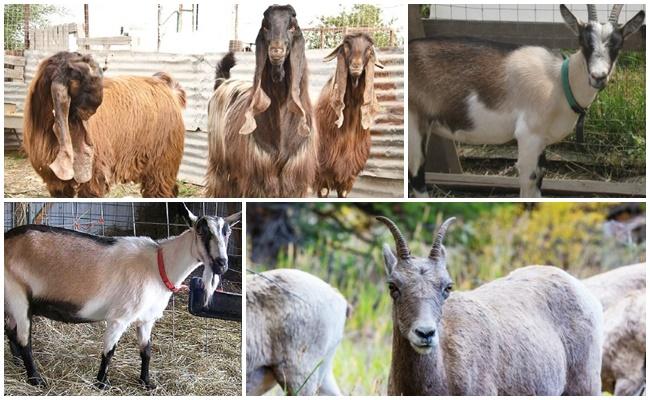
Ketosis
If the goat has stopped eating or drinking, ketosis may be suspected. This pathology is caused by an excessive amount of proteins with a low saturation of dry matter with energy. The most common cause of the disease is feeding hay to legumes. It takes energy to digest excess protein.
The body releases it from its fat stores. The rates of decomposition of triglycerides increase significantly, and they do not have time to oxidize to obtain acetic acid. As a consequence, intermediate compounds accumulate, which are called ketone bodies.
If the blood composition becomes acidic, enzymes are inactivated. As a result, the animal weakens, loses weight, loses its appetite. At the same time, multiple females, which give a lot of milk, are mainly affected.Treatment is diet. It is important to normalize the ratio of energy to protein. At first, the goat will not give too much milk, but little by little its productivity will return to normal.
Atony of the proventriculus
In case of maldigestion in the rumen, there is a risk of problems in the functioning of the proventriculus. In this case, peristalsis suffers, and there is no chewing gum. If the stomach doesn't work, fiber cannot be digested. Proteins are also not absorbed and enter the intestines. This becomes the reason for the development of putrefactive microflora.
If the goat has lost its appetite, chronic tympania can be suspected. Treatment consists in the use of ruminator agents - for example, hellebore tincture. Compliance with a hungry diet is also important.
Mastitis
This term is understood as an inflammatory lesion of the udder. It can develop as a result of a containment breach. Problems are caused by dirt, dampness, feeding errors. The main nutritional cause of mastitis is considered to be a sharp increase in the volume of concentrates, fresh grass or root vegetables in the diet. As a result, scar acidification and microflora death are observed. The goat develops swelling of the udder, she does not chew the grass.
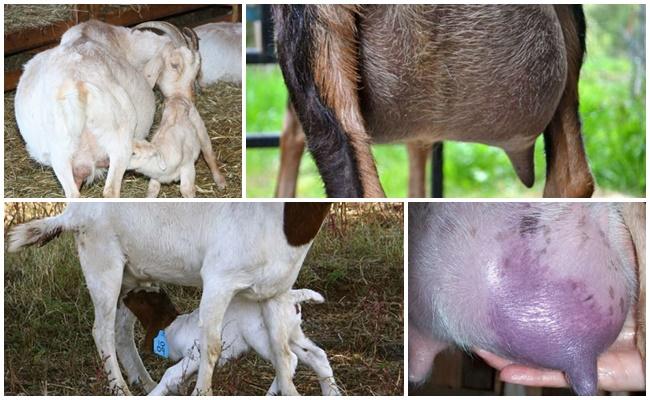
Endometritis
If the goat refuses to eat, the development of endometritis can be suspected. If the pet's feeding is disturbed, there is a delay in the placenta. This is what causes the pathology. The goat is a ruminant that needs adequate fiber and carotene. The last months of pregnancy usually fall at the end of winter. During this period, hay contains too little vitamin A.
In such a situation, the goat after lambing is in a depressed state. She has a stop of the scar and loss of appetite. To avoid the development of pathology, it is recommended that the female be given hay and branches. To prevent vitamin deficiency, it is worth injecting "Tetravit" and "Trivitamin" every day.

What to do if a goat has no gum
With the development of acute tympania, treatment should be started immediately. It is recommended to remove gases from the scar using a probe. Simultaneously with this procedure, it is worth doing a scar massage. After the gases escape, it is washed with water.
Drug therapy
If there is a problem with gum, the following drugs will help start the stomach:
- "Ichthyol";
- "Creolin";
- "Benzonaphthol".
The amount of the active ingredient must be selected by the veterinarian. It is recommended to mix medicines with 1 liter of water. The finished solution should be poured into the goat's mouth. To do this, you can use a rubber syringe. Some farmers use Espumisan. This remedy copes well with flatulence. Sikaden and Tympanol are distinguished by high efficiency. The dose of the active ingredient should be selected by the veterinarian.
Folk remedies
At home, you can help the goat with the help of hellebore tincture. It is recommended to mix this product with water. To stimulate the chewing gum in an animal, you need to give 1-4 milliliters of the drug per day. To eliminate scarring, the daily volume should be divided into 3 parts and given with an interval of 3 hours. The amount of water should be 50 milliliters.
It is important to consider that hellebore is considered a poisonous plant, therefore it is necessary to strictly adhere to the dosage.
Ordinary vodka is also considered an effective home remedy. It is recommended that an adult animal be given a quarter to a half glass of this drink.
In what cases is a scar puncture performed?
If drug therapy has not yielded results, and the symptoms of asphyxia only progress, a puncture of the scar with a trocar is indicated. The veterinarian should carry out the procedure. If the technique is violated, there is a risk of developing sepsis or peritonitis.
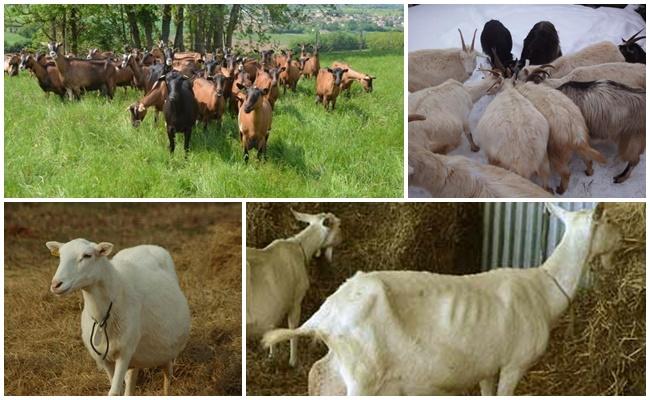
It is recommended to insert the trocar alternately with the hungry fossa in the direction of the goat's right hoof. After that, you need to remove the stylet and start releasing gases. During the procedure, the hole should be covered with a cotton swab. If this is not done, the goat may faint.
Prevention
To avoid problems, you should adhere to these rules:
- Limit the amount of flour mixtures and cereals. In winter, 300-400 grams of compound feed is enough for 1 goat. Drinking plenty of fluids will help facilitate its absorption.
- Succulent grasses and hay should be more than 50% of the diet. Animals should be fed 2-3 times a day.
- In winter, the goat needs to be fed liquid feed for 3 weeks. To do this, she should be given a lot of apples, carrots, fodder.
Loss of appetite in a goat can be attributed to a variety of factors. To cope with the problem, it is worth taking the animal to a veterinarian who will make an accurate diagnosis.
